Autumn Equinox

Equal day and equal night.
I love this ‘tipping point’ season between Summer and Winter, to me it feels like an exciting and inspiring time of year. The chilly, misty and frosty mornings turning into beautiful sunny afternoons and the ripening of autumn fruits, seeds and nuts and colourful leaf displays makes it feels like a time to forage, explore and collect natural treasures!

Image from dreamstime.com
Why do leaves change colour?

At the end of summer leaves stop producing chlorophyll , which allows other pigments, from yellow to red, to come through. The display of colours depends on the type of tree and the Autumn weather conditions eg. Dry weather and colder nights can lead to more sugar in the leaves (which increases the amount of anthocyanins that make leaves red).
Misty mornings on the way to work






Art In The Park – Waterlicht

Last week Castleton village played host to a very exciting large-scale digital installation by Dutch Designer, Daan Roosegaarde.
‘Set in the dramatic v-shaped valley of Winnats Pass that acts as a gateway into Castleton and the Hope Valley, WATERLICHT will virtually flood Winnats Pass with light and smoke to reveal the geological formations of the site and its history as a valley once submerged under a tropical sea. Stretching back into the times of the Ice Age, when glacial rivers carved the landscape, WATERLICHT will visualise how high the water level could reach without human intervention. Created using the latest LED technology, software and lenses, audiences will be able to see historical water levels’. – Abandon Normal Devices Festival.
I went to experience this mesmerising event on Thursday night and must admit that the excitement of the dramatic landscape, the audio soundscape that accompanied the installation and being able to walk into and through the light effect and smoke really was quite evocative. The photos that I took don’t do it justice but I would really recommend listening to the specially commissioned soundscape that looks to the fascinating geology and heritage of the site and its relationship with water. To download it click on the following link: www.waterlichtradio.com
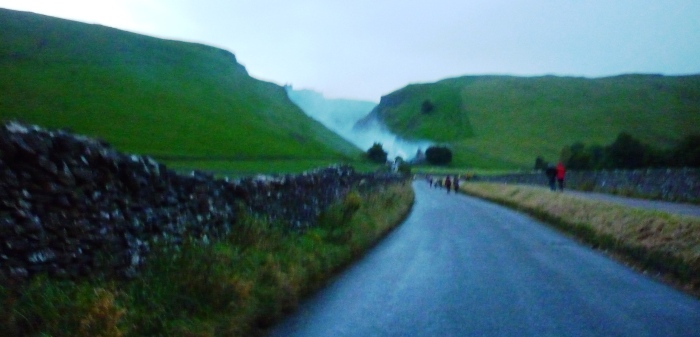
Walking up from Castleton village to the smoke filled Winnits pass.

As the skies darken the combination of lights and smoke started to create waves above your head.
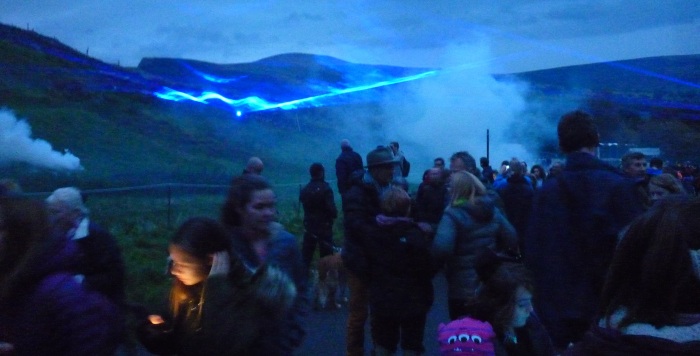


The rock faces were lit to give a very other-world quality to the landscape.

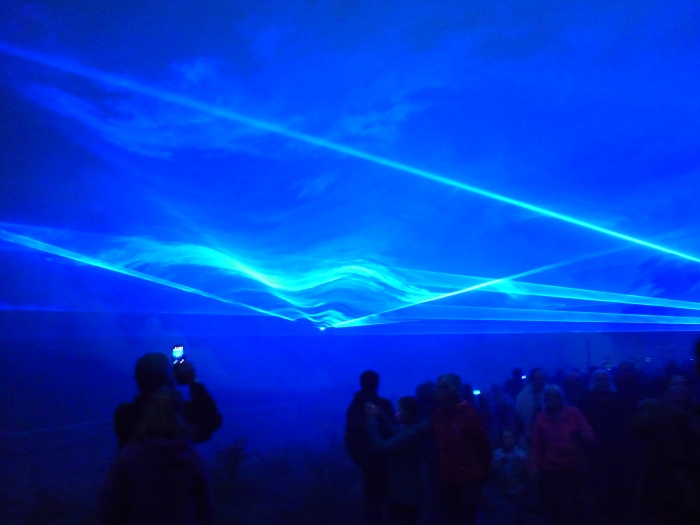

On reflection the experience left me with a gentle reminder of just how much water has influenced our landscapes and will continue to do so.
The work that organisations like the Moors For The Future Partnership are doing to restore our precious and rare Blanket Bog habitats is just so important, not only for the benefit of our natural environment but for our own survival and ability to thrive.
Bog Fest 2017
The Moors For The Future Partnership and IUCN Peatland Programme celebrated ‘Bog Fest’ at the weekend, a three day festival based in the village of Edale. Unfortunately I didn’t attend but I’m sure that the weekend was a great success, packed full of fun events and activities to help raise awareness of the fantastic conservation work.

I’m hoping to get to know Edale, it’s landscape, footpaths and community over the next few months as I start a new Forest School job with the village school Key Stage 1 class. Exciting stuff!
An Autumn foraging walk just ‘around the block’



The Hawthorn trees are packed with fruit but I thought I’d leave the ‘Haws’ for the birds (although having just found this recipe online I might be tempted to try it out – Hawthorn jelly recipe).

I did pick some Rosehips and have used them before to make small pots of jelly for christmas presents, though I may try something a little different this year as I found this recipe for syrup – www.rivercottage.net/recipes/rosehip-syrup.

This public footpath is well known for it’s Blackthorn bushes and I had high hopes of a huge crop of Sloes…..unfortunately I think that this ‘not so well kept secret’ has been visited by some foraging locals already. I picked about 10 sloes, so I’m still on the look out!

A lovely little nest not so well hidden among the Blackthorn and Elder.
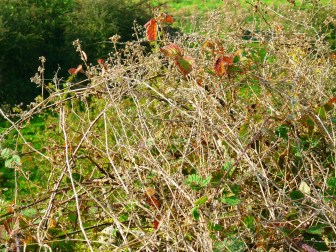

Goosegrass or Cleavers is always something that I collect by the arm full at this time of year. When air dried it makes fantastic tinder for our Forest School campfires and my house is constantly covered in those tiny sticky balls throughout the winter as I hang up bundles to dry.
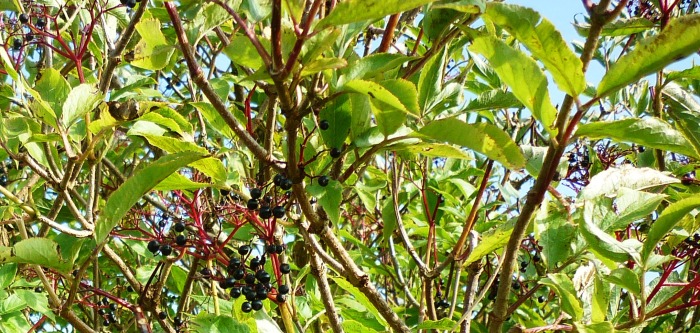
I picked a few Elder berries though I will need lots more if I’m to try out any of these recipes – How to pick and cook elderberries By Carol Wilson – Food writer


 .
.
The Beech trees are just beginning their spectacular Autumn displays
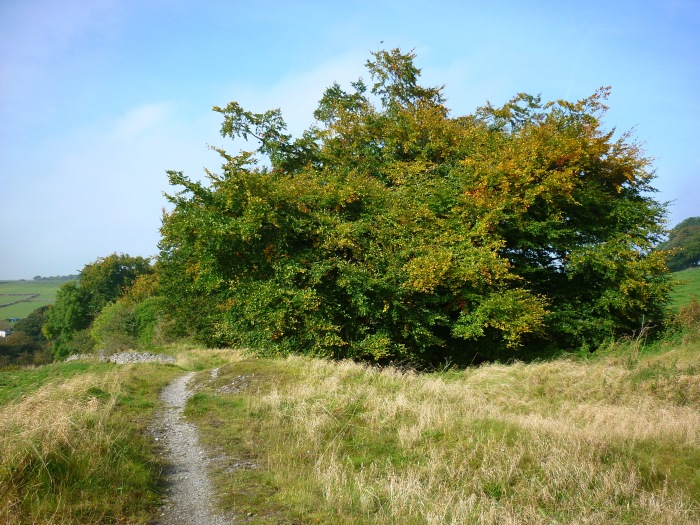

A lot of the brambles are at the end of their fruiting season already but if you look carefully you can still find a few delicious Blackberries.
Apple and blackberry crumble and custard for tea!


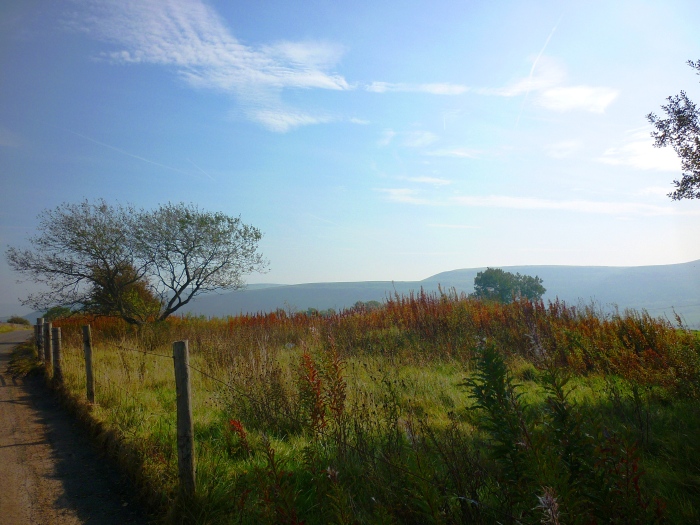





Slim pickings indeed! But well worth a walk in the Sunday morning sunshine.